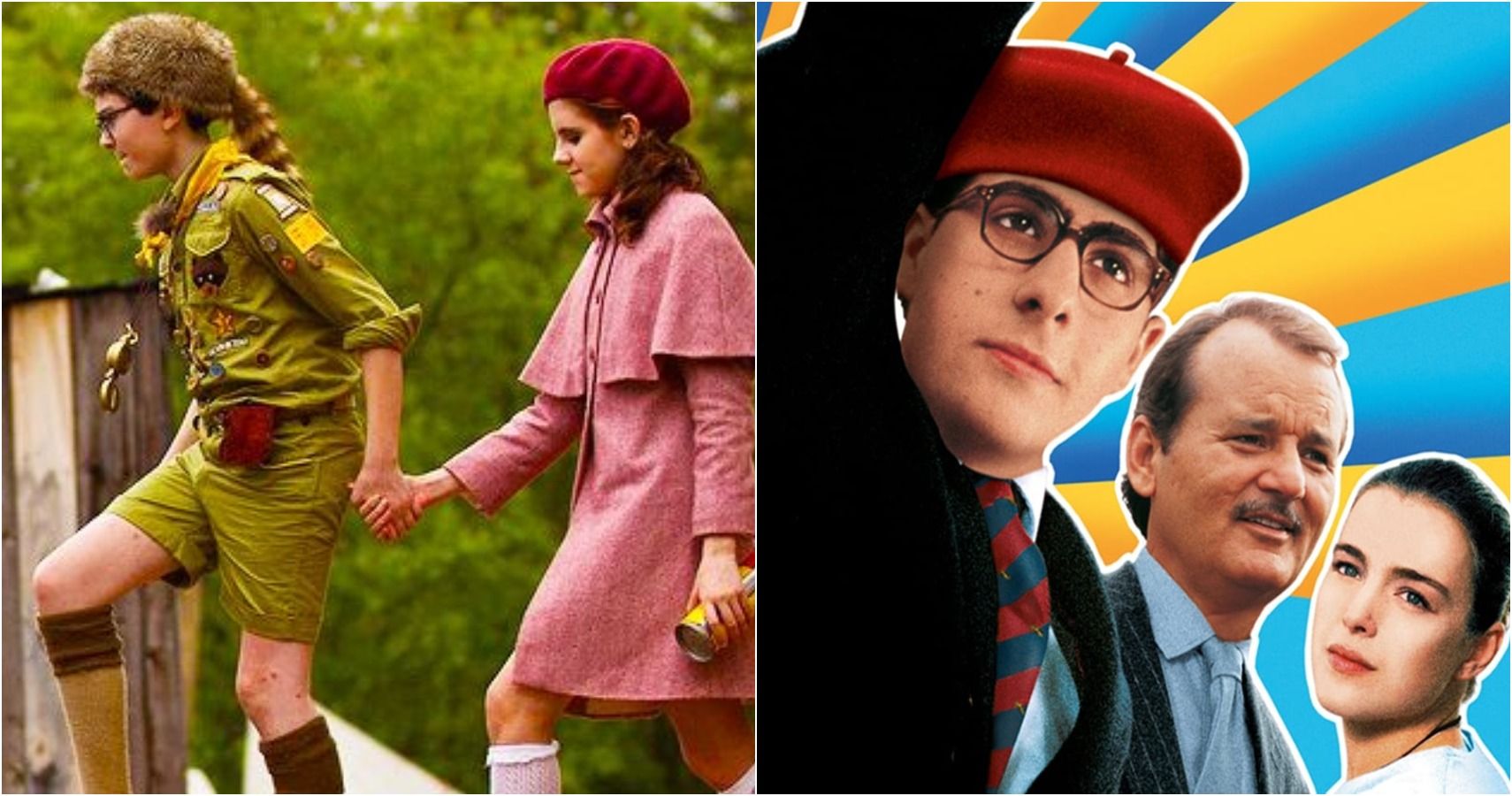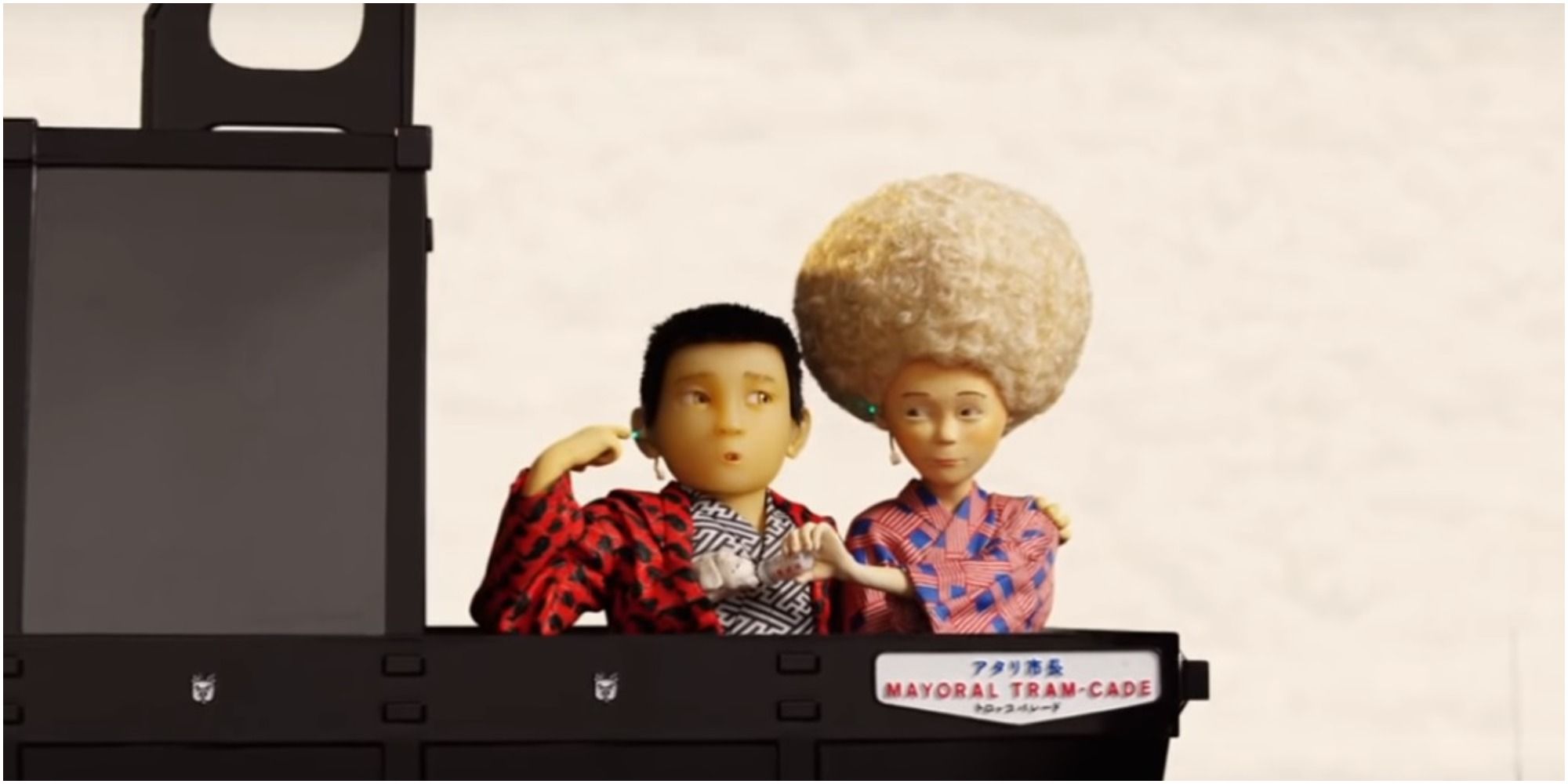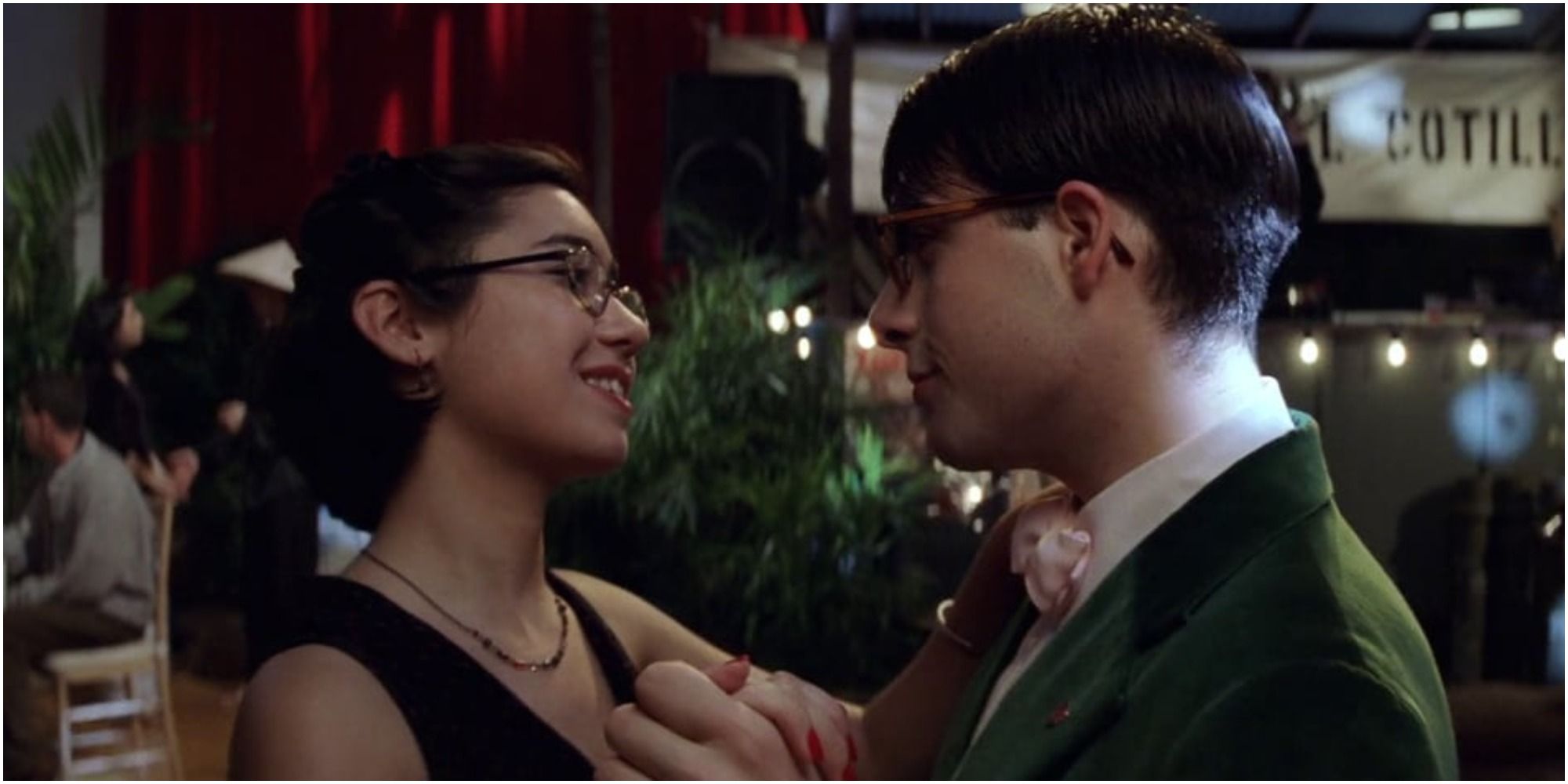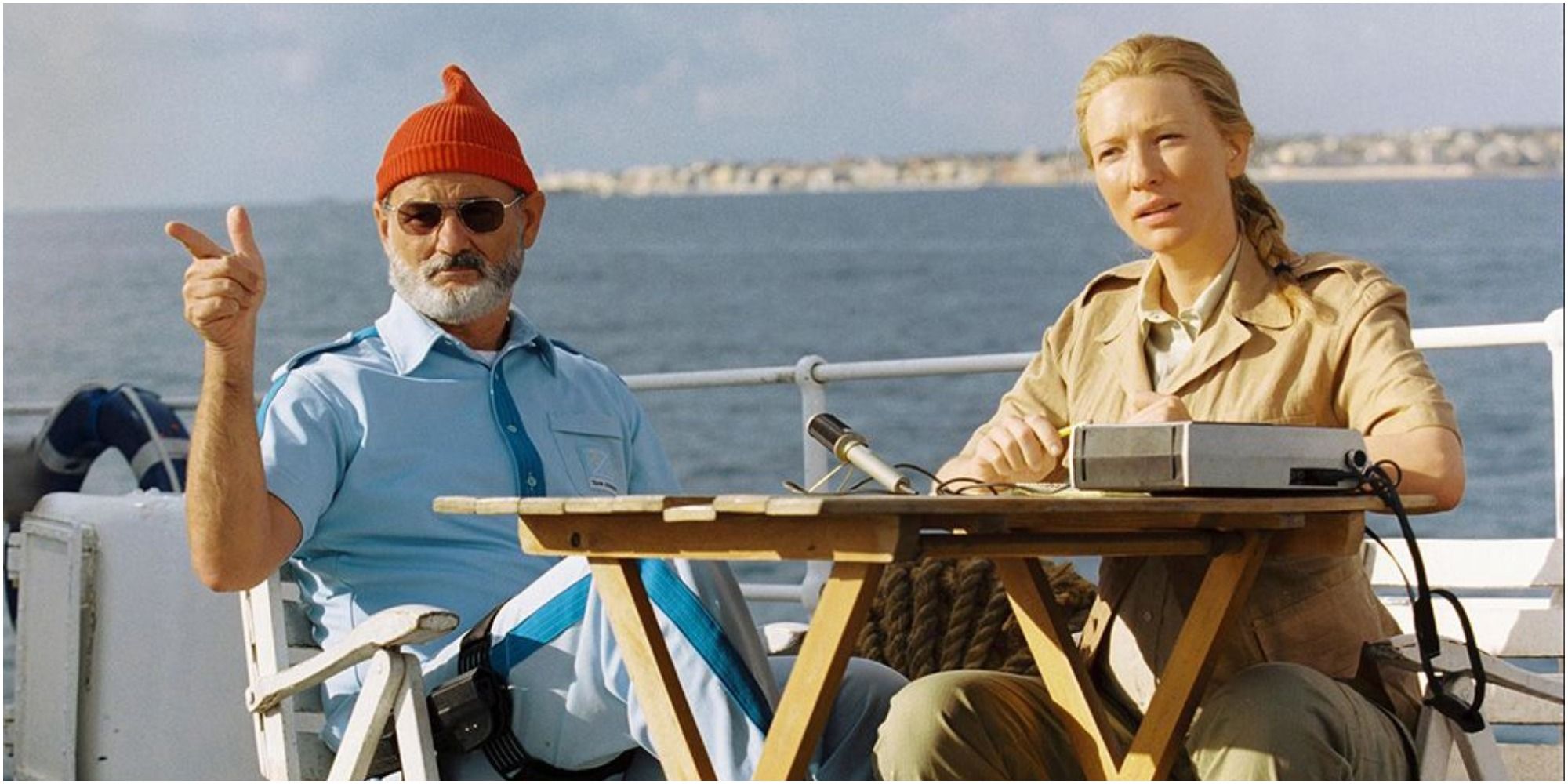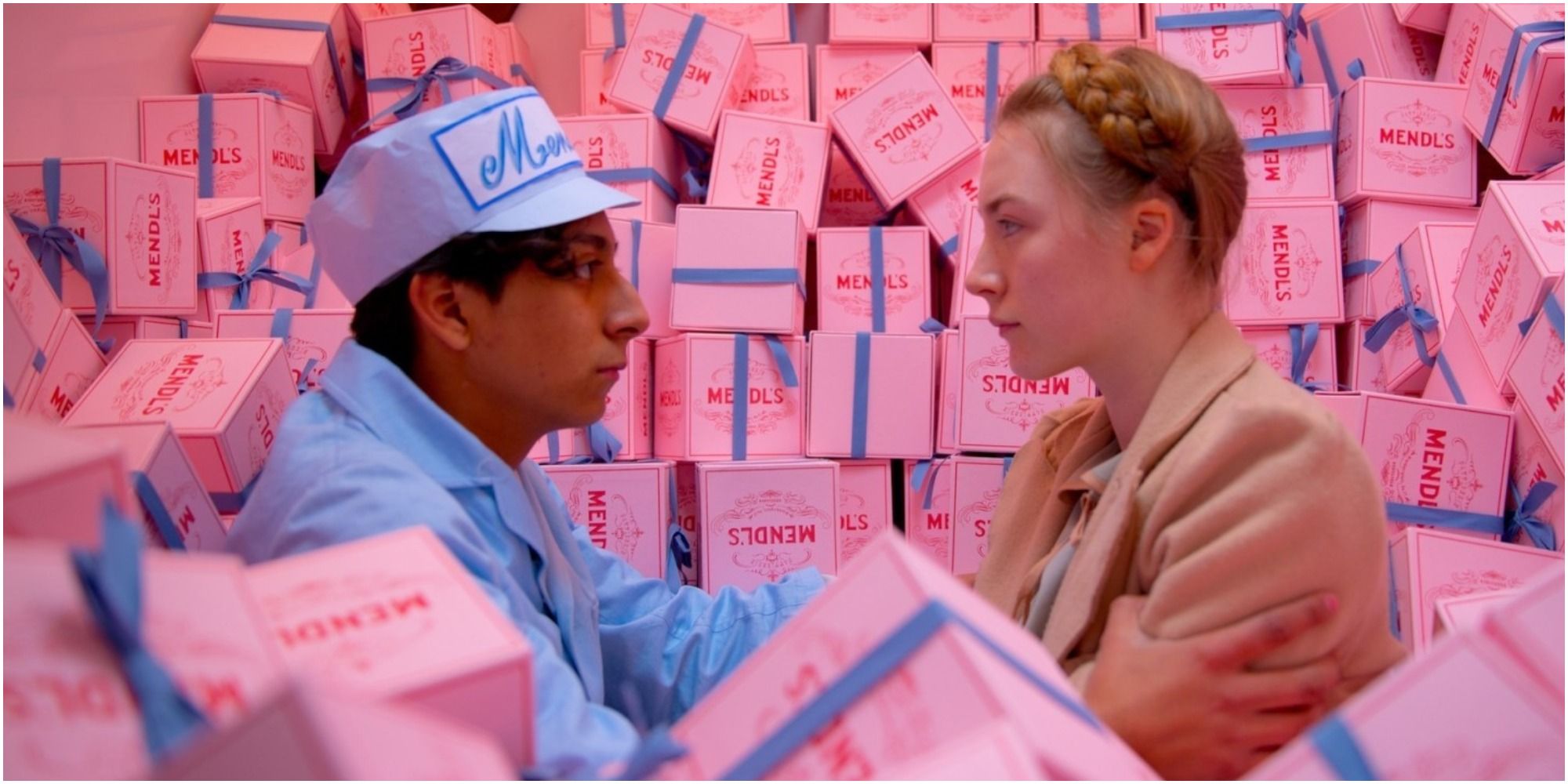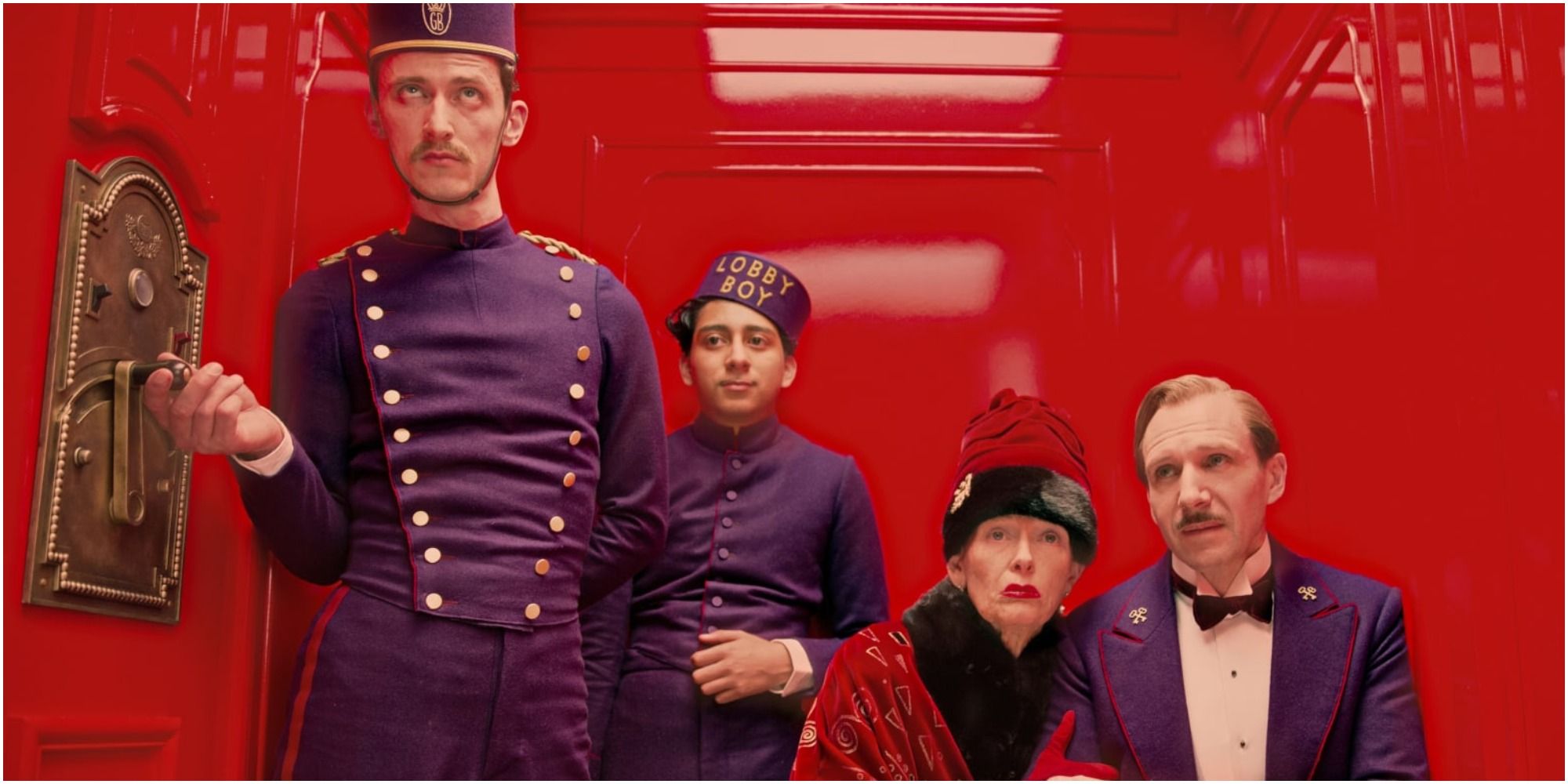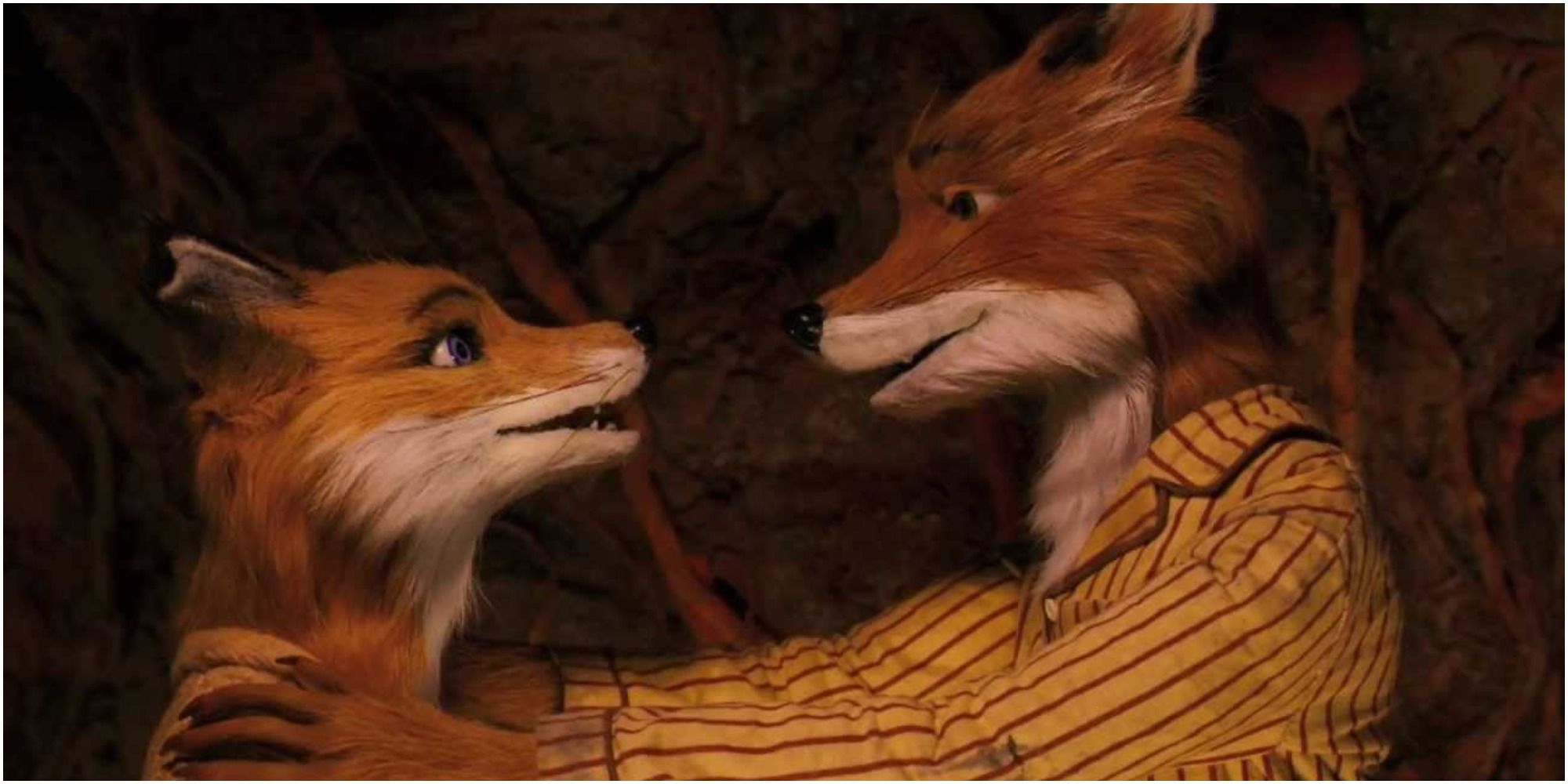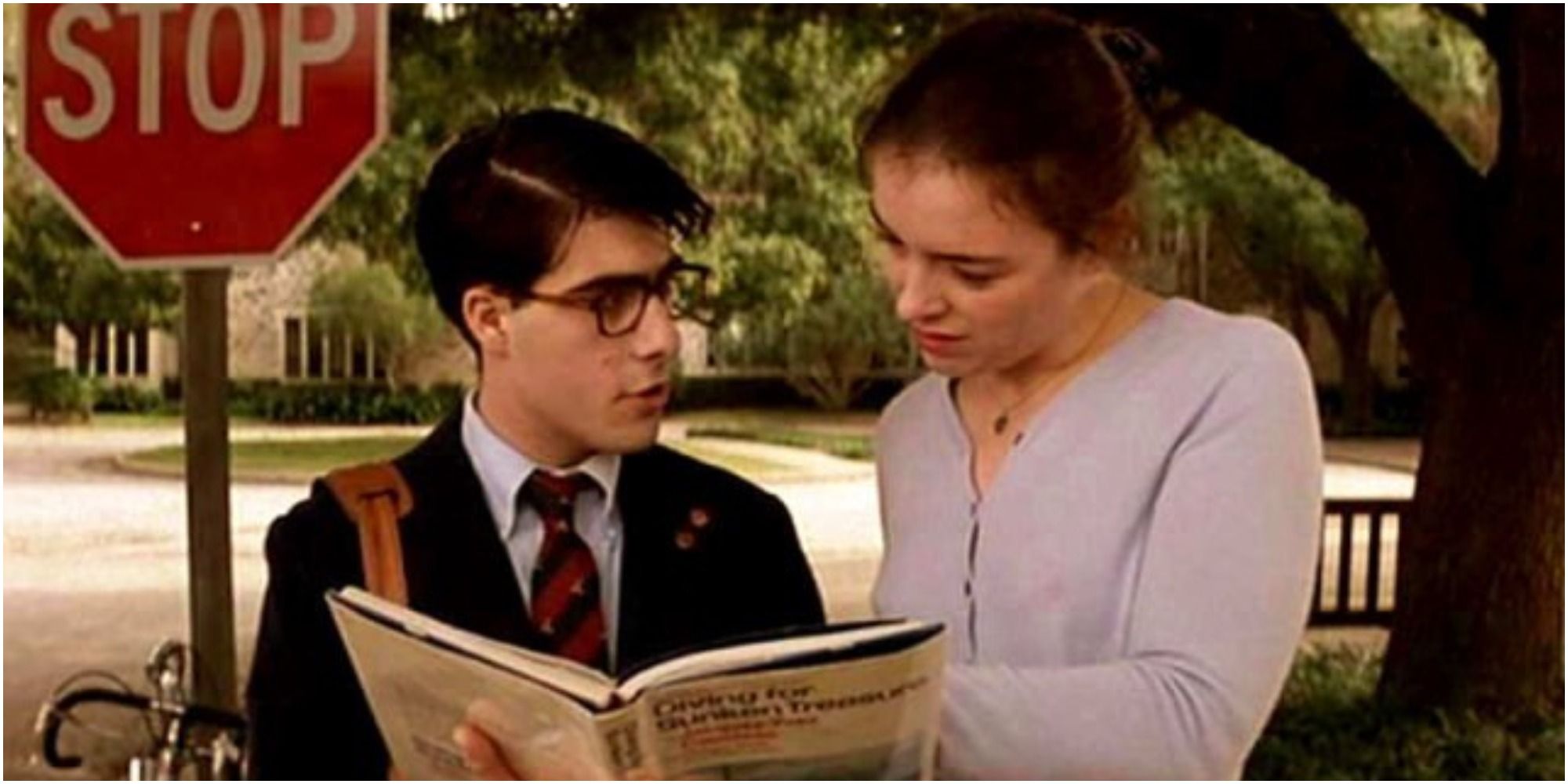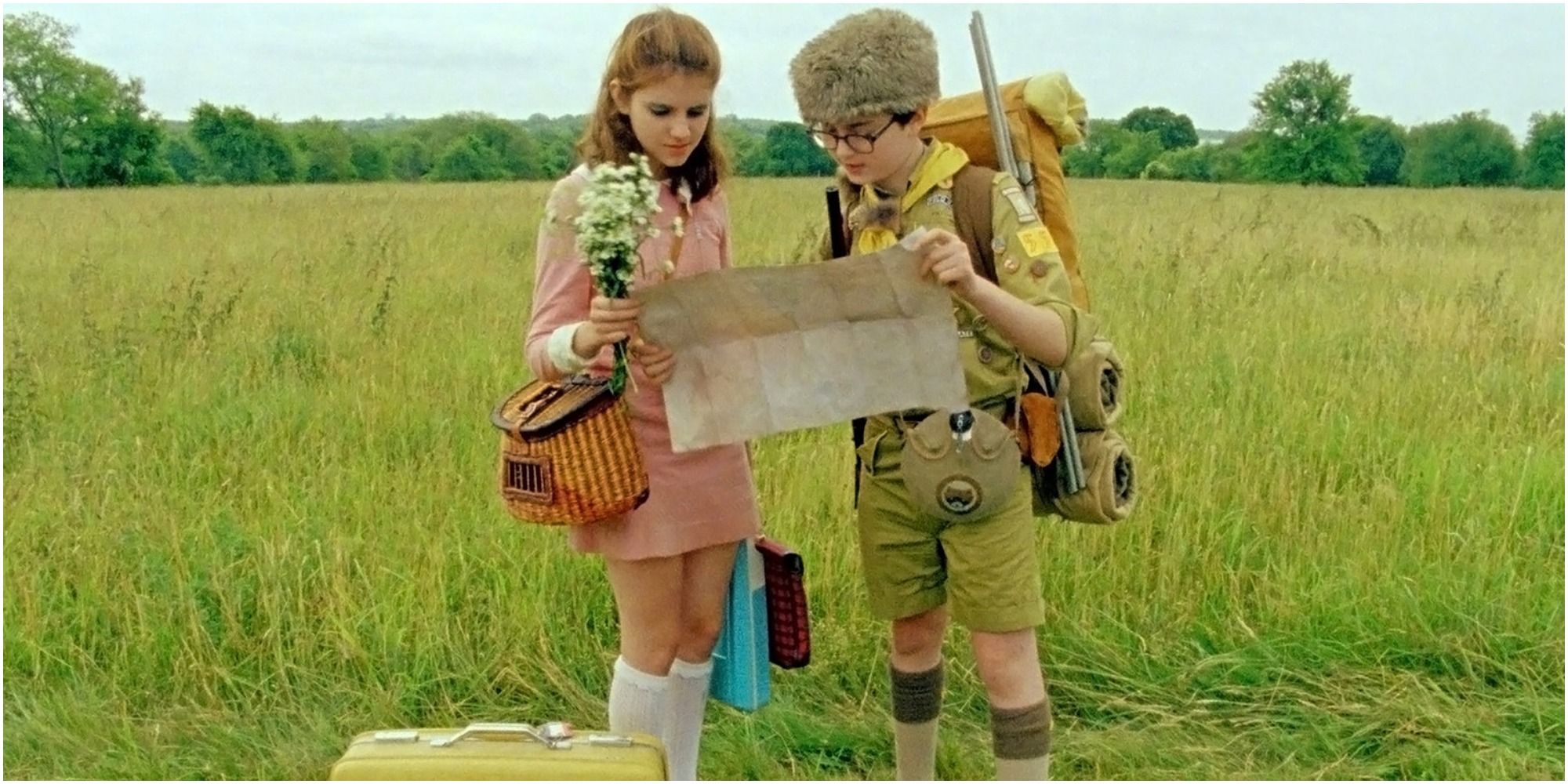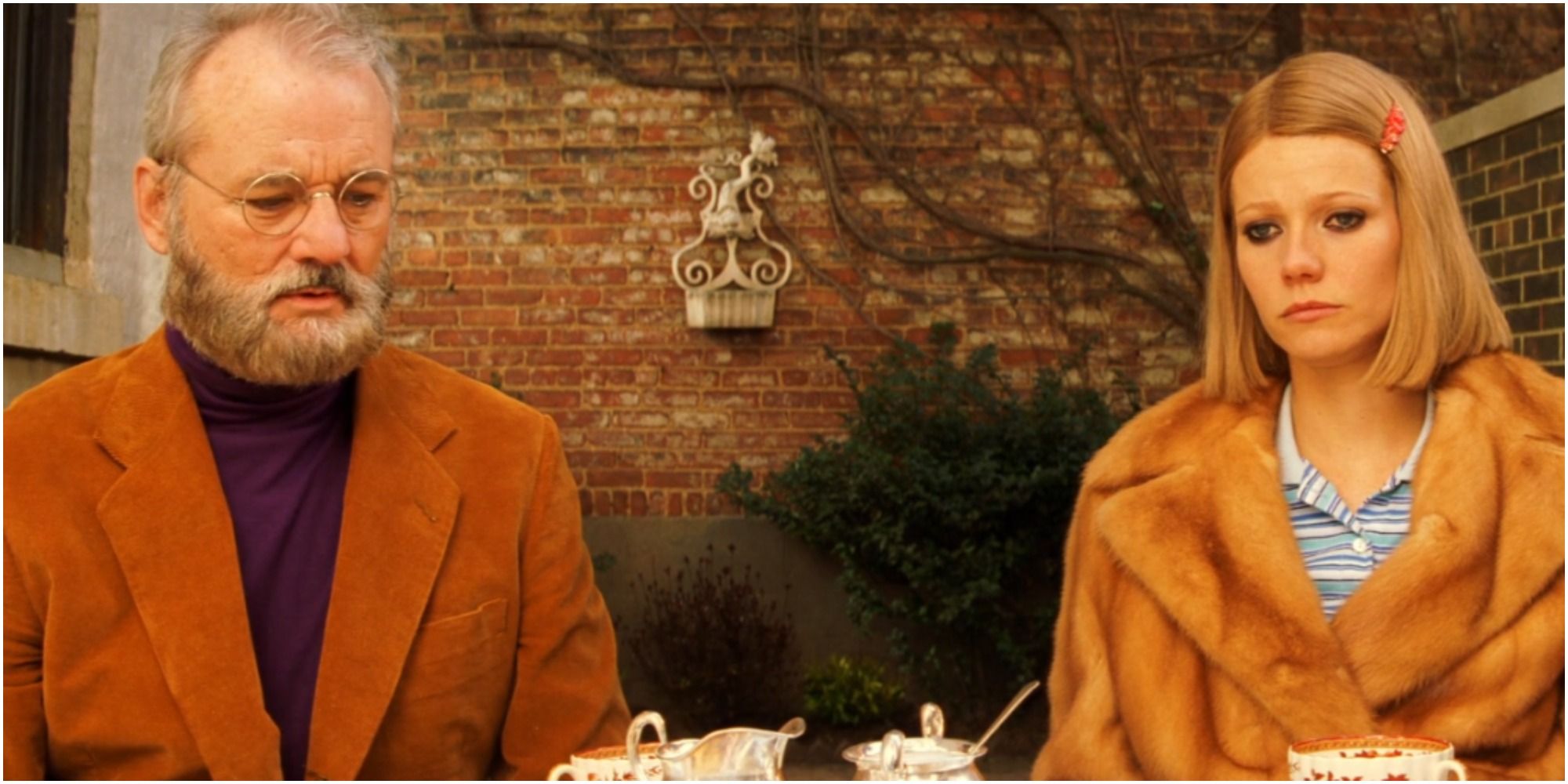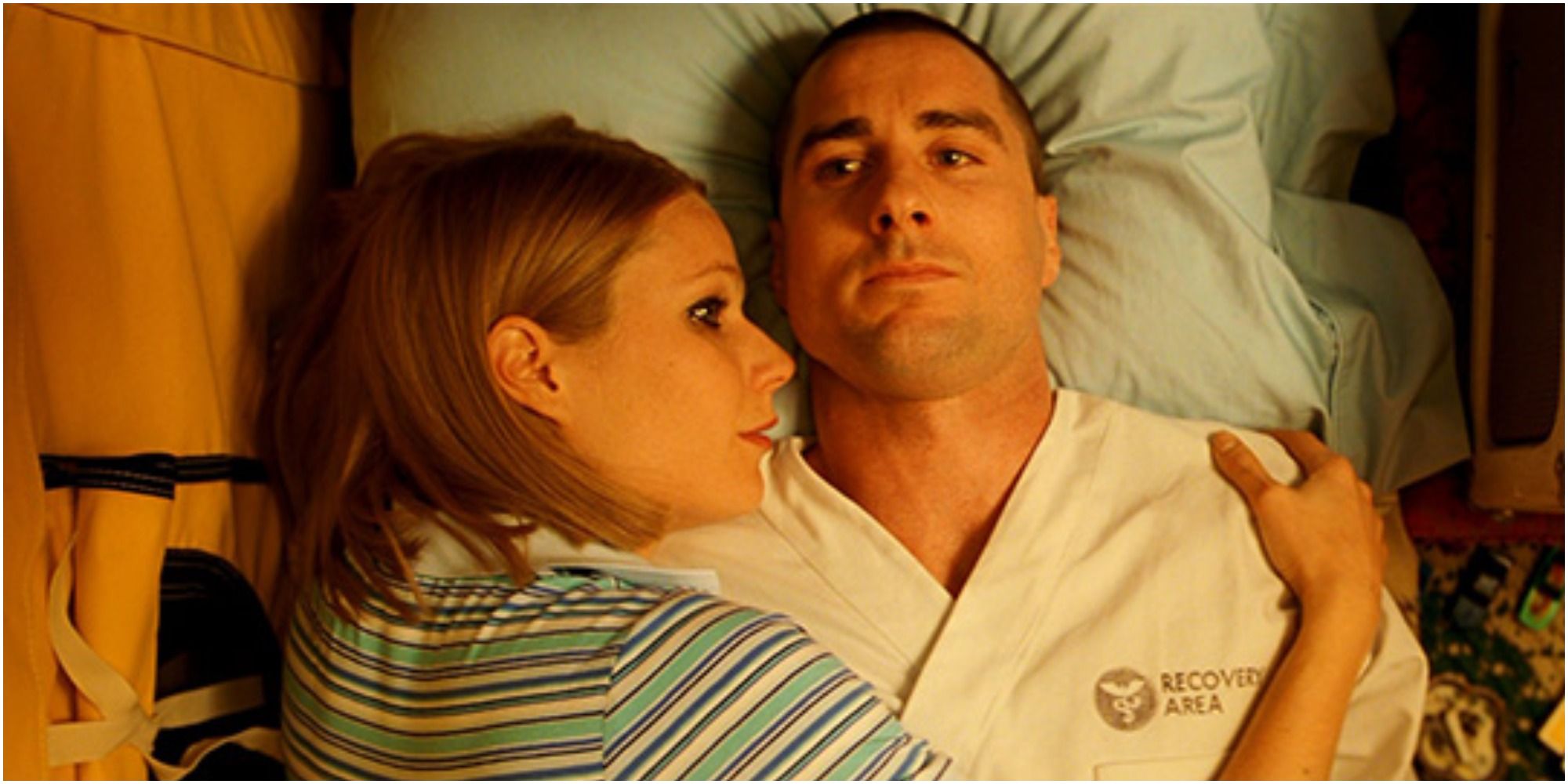While not a specialist in romantic movies, Wes Anderson places romantic subplots on his motion pictures. Some of them are endearing, while others are head-scratching. Some of them inspire to pursue couple goals, while others give second thoughts about romances. Either way, the couples in Wes Anderson’s films motivate the story and show the vulnerabilities of each character.
For that, here are the 5 best (and worst) romantic couplings in his films. Each is ranked to how genuine, natural and memorable the relationship is. And rest assured that some will be inspired by the lengths they would go for love.
Worst: Atari & Tracy (Isle of Dogs)
Isle of Dogs is a great stop-motion film about a group of dogs and dog sympathizers during dystopian Japan. However, one of its few problems is the character of Tracy Walker, the foreign exchange student from Ohio. Voiced by Greta Gerwig, she leads her fellow students to rebel against the tyrannical Mayor Kenji Kobayashi and stand up for his opponent, Professor Watanabe. She is meant to serve as the audience surrogate.
But whenever she appears in the film, the story comes to a halt. Her shtick is one-note. And her admiration (and eventual relationship) for Atari does not feel earned.
Best: Max & Margaret (Rushmore)
While Max is out there, pursuing his beautiful teacher Rosemary Cross, his classmate Margaret Yang repeatedly reaches out to him to engage in a genuine friendship with him. But he rebuffs her. It is only when Max gained the realization to prioritize his schooling that he appreciated Margaret’s offer of friendship and recruited her to his play and his ploy for Mr. Blume and Rosemary to reconcile.
Max and Margaret’s connection is complemented by their polar opposite personalities. Margaret is friendly and malleable, while Max is uptight and resolute. And their interactions are bright spots for Max’s dodgy school year.
Worst: Steve & Jane (The Life Aquatic with Steve Zissou)
Steve Zissou is an eccentric yet spirited oceanographer, who aims to track down the jaguar shark that ate his friend. He commands the submersible Belafonte with a dedicated staff and a documentary. Two of them include Zissou enthusiast Ned Plimpton and pregnant reporter Jane Winslett-Richardson. Both Steve and Ned fall in love with Jane, and it slightly sparked a rivalry between the two men.
Zissou is the most to give fault here since his wife is giving warnings to him. And his interactions with Jane often veers to subtly suspicious, even though they exchange thoughtful information about the research.
Best: Zero & Agatha (The Grand Budapest Hotel)
Zero and Agatha’s romantic relationship is a genuine one from their few yet poignant moments during the course of The Grand Budapest Hotel. As two souls with no specific guardians, they are two souls who found company with each other. In the film, they went to romantic dates that grow their connection even more.
And when Agatha learned about Zero’s exploits with Monsieur Gustave, she stayed loyal and joined him in his attempt to clear their names. This relationship is essential to Zero’s arc, in that his attachment to the hotel is its reminder of Agatha and their undying love.
Worst: M. Gustave & Madame D. (The Grand Budapest Hotel)
And the opposite of that spectrum is Monsieur Gustave’s infamous chivalry towards the elderly female guests in the Grand Budapest, particularly to dowager Madame D. His first appearance centers on him extending his quixotic hospitality to the old woman; and that includes him reading an improvised poem to her. Their connection is implied to be romantic, among the other romantic pursuits that M. Gustave had with other senile female guests.
Despite M. Gustave and Madame D. having mutual respect toward each other, their moments with each other feature Gustave commenting on her skin complexion and on fear of commitment. Love?
Best: Mr. and Mrs. Fox (Fantastic Mr. Fox)
Mr. and Mrs. Fox are the typical dysfunctional yet loving parents, whose marriage is tested upon their exposure towards three hostile formers. Being unique creations of Roald Dahl, Anderson retained their core personalities yet added stakes in their relationship. Mr. Fox is a seasoned fox who longs for his days as a thief, and Mrs. Felicity Fox is a caring wife and mother who wants her family safe from danger.
Their strong love and empathetic understanding toward each other pushes Mr. Fox to realize his mistakes and to be a better family man and leader to the other sewer animals.
Worst: Max & Rosemary (Rushmore)
Rosemary’s unrequited feelings towards Max makes the latter a fatal victim of a one-sided romance. Max’s infatuation to Rosemary is reasonable if a teacher is that caring and loving. But his pursuits for her and the eventual rivalry he had with Mr. Blume resorts to Max showing his pushiness and unconcern to his extreme actions.
This makes his romantic pursuit for Rosemary less earnest, especially when he attempted to feign a car accident to make her sympathize with him. No wonder that in the end, he helps Mr. Blume and Rosemary patch their relationship. At least there is that.
Best: Sam & Suzie (Moonrise Kingdom)
Sam and Suzie are victims of hostile households. Sam is an orphan, whose current guardians, the Billingsleys, did not want to commit to sheltering him. Suzie is the eldest child to Mr. and Mrs. Bishop, husband-and-wife lawyers who have a falling out. When Sam reached out to her before her performance for the play Noye's Fludde, they instantly are smitten. And their relationship has deepened as pen-pals, eventually making a pact to run away together.
Their rebellious romance is the result of puppy love during a bleak part of their adolescence. Yet, their commitment towards each other is remarkable.
Worst: Margot & Raleigh (The Royal Tenenbaums)
Margot Tenenbaum is the adopted daughter to Royal and Etheline Tenenbaum. Because of that, she is more of the black sheep of the gifted family for her checkered past. This is implied in her estranged marriage with neurologist Raleigh St. Clair.
Aside from the egregious age difference, Margot and Raleigh’s marriage only revolves on their soft-spoken exchanges and Raleigh’s policing over Margot’s smoking habits. And it is obvious from the get-go that Margot resents Raleigh, thus resulting in her promiscuous relationships. Though this behavior is stemmed from her absent relationships with her father figures, it makes their relationship less compelling.
Best: Margot & Richie (The Royal Tenenbaums)
However, Margot’s relationship with Richie is her light at the end of the tunnel. Despite her uneasy history, Margot confides in Richie’s undying commitment to her. That has been the case for Richie, even after he shaves his hair and attempts to commit suicide over the discovery of her promiscuous affairs.
Setting aside that they are technically non-biological siblings, their pairing is a reasonable one, in that both Richie and Margot are longing for something better away from their prodigious commitments. At the moment when they see each other in the terminal, it is then that they realize their longing for company. Their discourse only makes their relationship that endearing.

